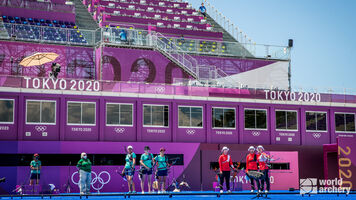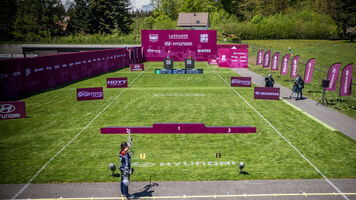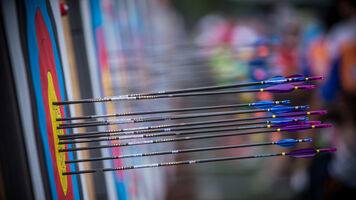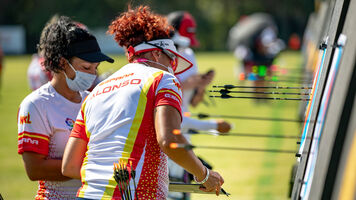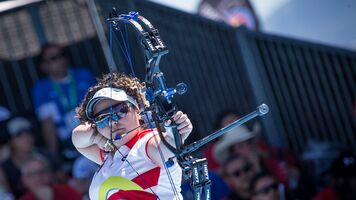International archery made its post-pandemic return in Antalya – but was it a success?
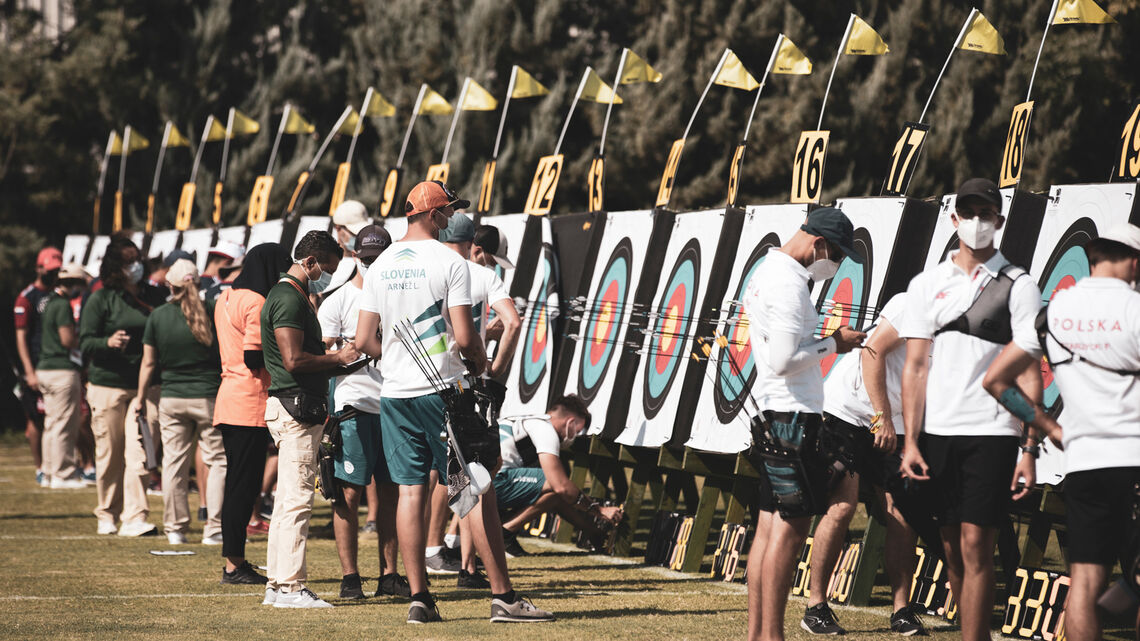
The past six months should have been chock full of competition – not to mention the Tokyo 2020 Olympic Games – but instead we have been isolating, socially distancing and patiently waiting for international archery to return to something resembling normalcy.
This year’s pandemic has undoubtedly been awful, for many people and in many ways, and it’s not over yet.
While the world adjusts to the working reality of life with COVID-19, archery must, too – and the sport made a grand leap toward that future by holding its first international event since the start of the calendar hiatus in March.
Antalya hosted 107 archers from 13 countries for a three-day world ranking tournament on 2-4 October 2020.
It is a small number when compared to prepandemic international tournaments. But it was also a manageable number for an event that was testing new protocols to protect the well-being of everyone in attendance.
Andrea Marcos, Lukasz Przybylski, Magdalena Smialkowska and Artem Makhnenko took the individual titles, adding some decent points to their world ranking totals, too. So from a purely sporting perspective – arrows were shot, medals were won.
But Antalya’s success will need to be measured on more than just that.
Health protocols
The organisers in Antalya followed local guidelines and required all archers and coaches to wear masks in public areas whenever they were off the shooting line – and respect 1.5-metre social distancing.
It meant that athletes wore face coverings during competition scoring, while travelling and when in the hotel.
“I think the COVID-19 measures will stay with us for some time,” said compound women’s winner Marcos. “We will get used to wearing a mask in competition. In the end, it’s for everyone’s well-being, and it’s something that we must respect.”
Archery simply isn’t a sport that requires physical contact. Social distancing is, in many ways, built-in.
But four archers normally shoot at each target during qualification, meaning there’s just under 1 metre separating the shooters on the line – and small crowds while scoring at the target.
In Antalya, each archer had their own target. It was a stark difference.
“During competition, archers have regular behaviours that they are used to – but here it was completely different,” said Turkish head coach Goktug Ergin. “All the targets were visible for all the archers. They could focus on only their arrows, and that makes some extra nerves.”
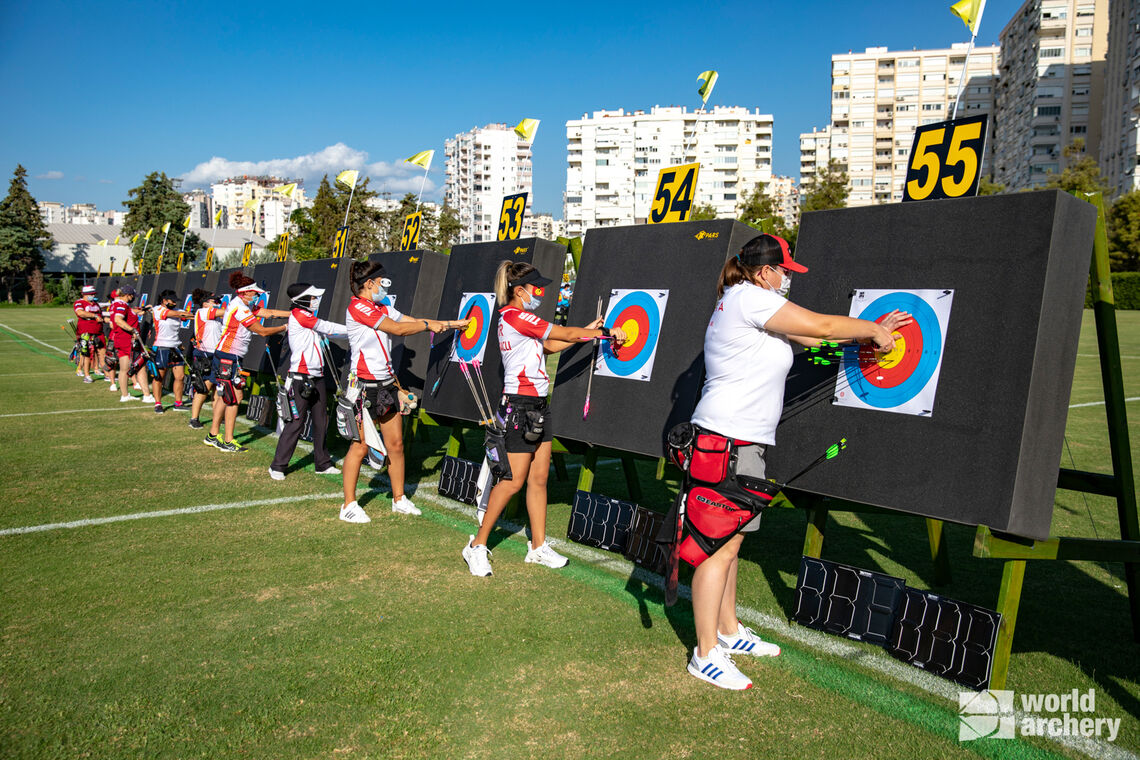
The additional space requirement meant up to 60 single targets were used at any one time during a portion of the event.
For a dedicated and large archery facility like Antalya, it’s not a problem. But it will mean that tournaments are likely to start putting limitations on the maximum number of athletes who can participate.
“As long as you can put 64 targets anywhere, you can make an international competition with 200, 250 archers – which is a really good number under these circumstances,” said Goktug.
“The difficult part is deciding the limitations. But if you have some proper rules and space, you can do it because archery doesn’t need contact and you can keep socially distanced.”
Three days after the event, there have been no reported cases of COVID-19 among participants at the International Antalya Challenge.
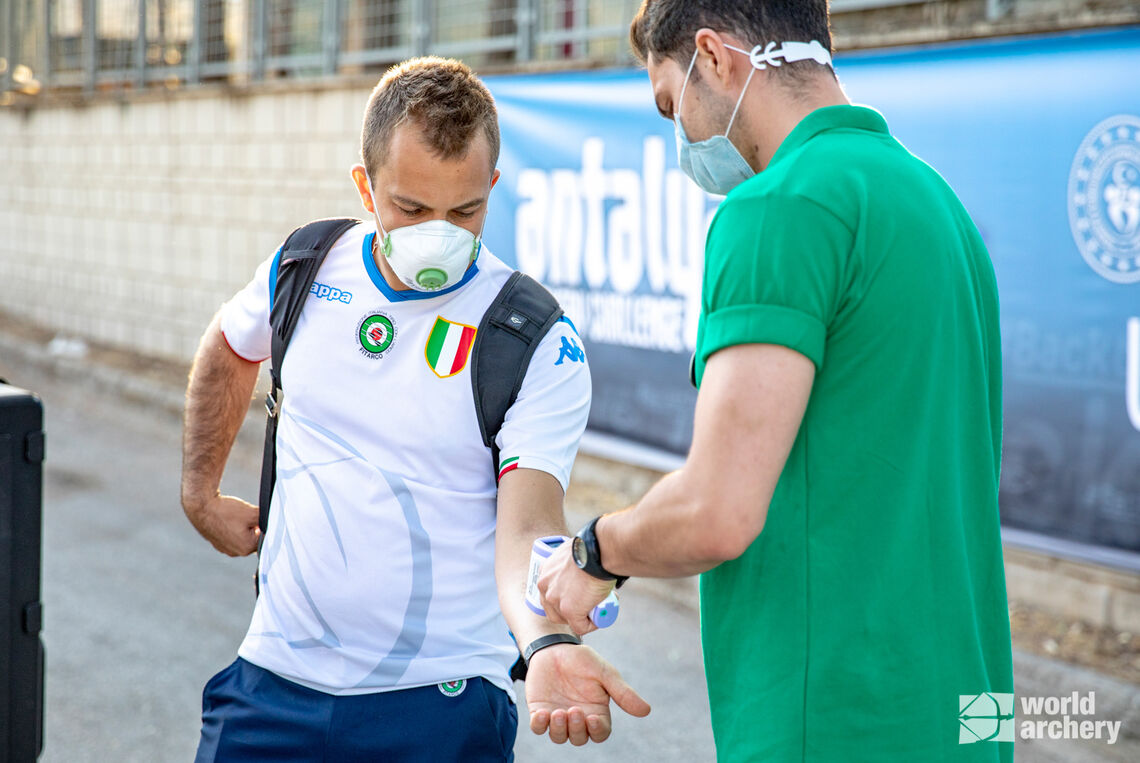
Travel
Each country manages its own borders – and the COVID-19 pandemic has resulted in normal travel becoming difficult.
Whether it is accessing a foreign country or quarantining, the requirements at home and abroad are constantly changing. It is unpredictable, and the rules are not consistent across nations.
Among the teams in Antalya was Great Britain.
When the squad flew out for the event, there was a travel corridor with Turkey negating the need for quarantine. But, on the Friday of the competition, that corridor was removed – and the team will now need to be isolating having returned home.
Some countries have already or will be putting in special programmes for athletes to travel to compete internationally.
The restrictions on cross-border travel are going to make the logistics of events more difficult for a while. But as time progresses, and as more sports make their returns, the procedures for teams to travel abroad should become easier.
Limits on travel don’t just apply to athletes.
Rather than sending expert staff to the venue, World Archery has worked on new remote support services – particularly for results management, competition operations and broadcast – that will be available to more events in the future.
This has three key benefits. Firstly, we will be able to better help tournaments that are keen to grow; secondly, there will be more archery content shown live; and, thirdly, less travel fits with World Archery’s renewed commitment to sustainability.
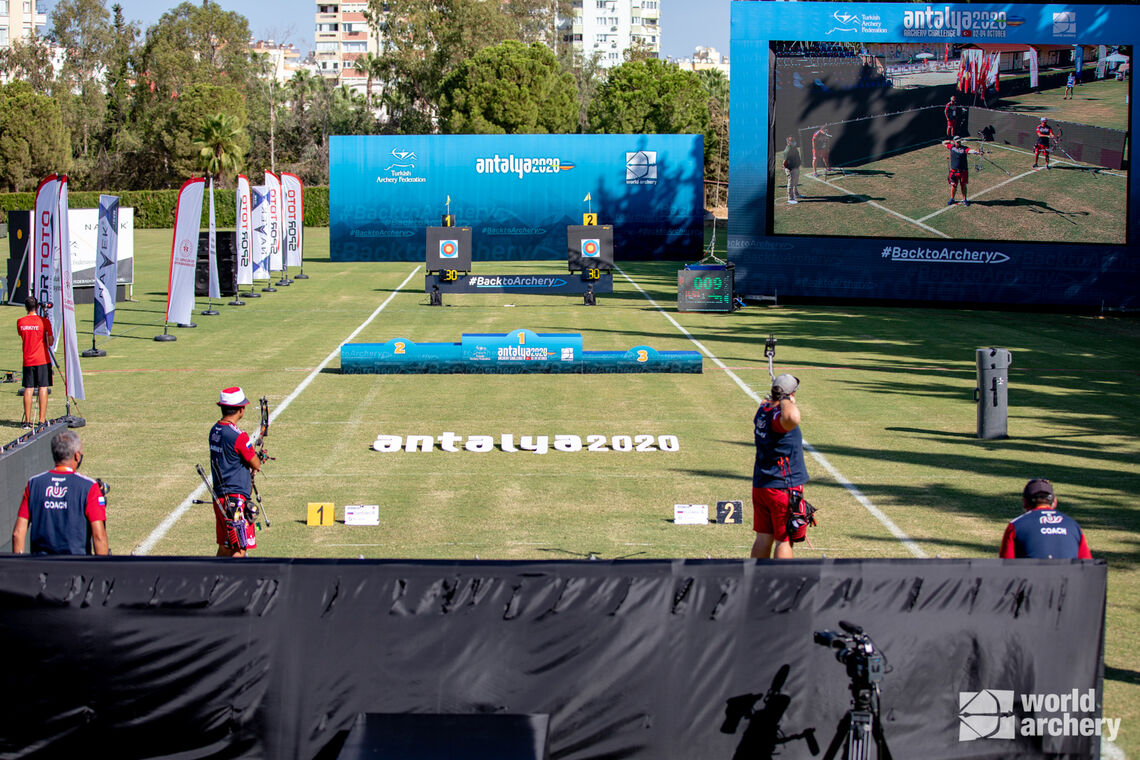
Schedule
The number of competition days in Antalya was reduced to just three – and only an individual event was held. (There were no mixed team or team competitions.)
Arguably, this might have led some teams to make the decision not to attend. However, squads like Russia added a training camp to the trip, adding to the total of meaningful arrows shot in Turkey.
The three-day competition format, with just over an hour of broadcast finals (the four individual gold medal matches), was developed as part of an ongoing drive to increase the consistency of international archery scheduling.
(World Archery also released a calendar of international blocks through 2024 earlier this summer.)
This new template worked. And while the team events could be added again when restrictions are lifted, more uniform schedules should make world ranking tournaments easier to run, as well easier to watch live or follow results from afar.
More than 3.8 million people tuned in to the event on social media, streaming, results on the www.worldarchery.sport website, or TRT Spor’s live broadcast in Turkey.
What’s next?
The tentative schedule for international competition, including three stages of the Hyundai Archery World Cup and the next Hyundai World Archery Championships, has already been released for 2021.
Organisers can still apply to host world ranking events under the new #BacktoArchery guidelines, which run until the end of next March. And an announcement on the Indoor Archery World Series is expected soon.
What Antalya has proved, above everything, is that archery events work in this post-pandemic world.
Tournaments need to be flexible in their setup and scheduling, minimising people on the field and likely limiting participation, while everyone who does attend has a responsibility to protect their fellow athletes and coaches.
But since archery is a noncontact sport – and aside from while actually shooting, wearing a mask is not an issue – it’s quite easy to comply with health guidelines and protect everyone’s wellbeing.
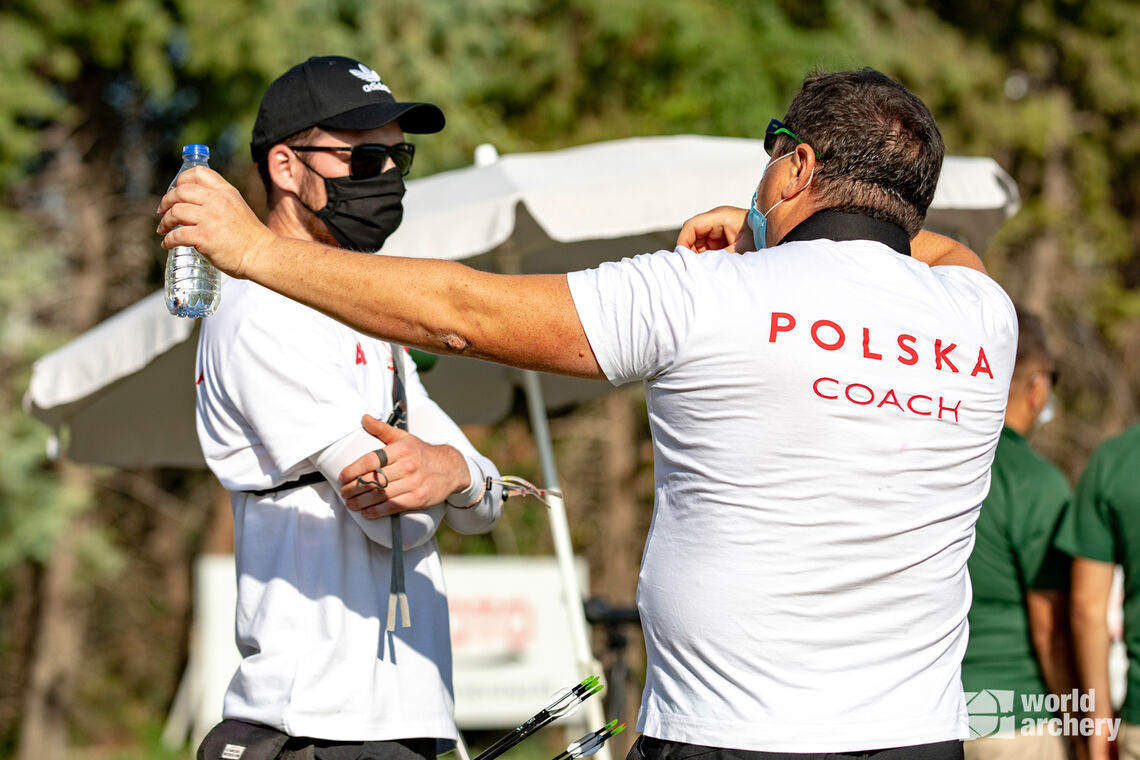
“We didn’t want to cause the risk of contamination and invite too many people here. It took a long time [to organise] and we just followed all the steps, one by one, to make sure there were no risks,” said Goktug, the Turkish coach.
“We tried to keep the archers safe. All the time, the archers were the first priority, and I think we did a good job.”
Every athlete interviewed in Turkey was effusive in their praise for both the organisation of the event – and having the opportunity to compete at an elite level once again.
“It was great, for the archery world and for coming back to competition,” said Italian recurve woman and reigning European Games Champion Tatiana Andreoli.
“I would really like it if there were more events like this to replace the other events we missed [this year]. And I hope that next year will really be full of competition.”
The 2020 Antalya International Challenge, archery’s first world ranking event since the start of the COVID-19 pandemic, took place on 2-4 October 2020.
Photos by Saygin Akinci. Quotes by Oyku Ergec.





